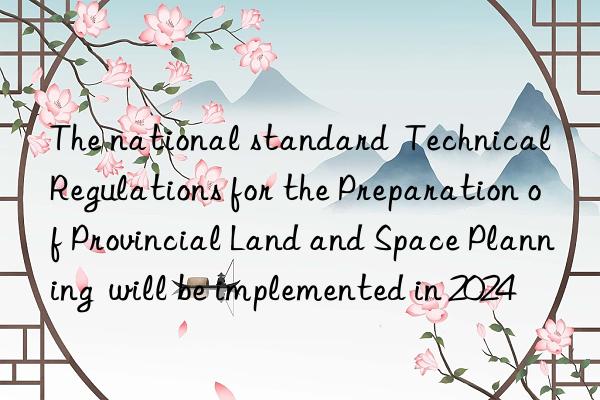
Recently, the State Administration for Market Regulation (National Standards Committee) approved the release of the national standard GB/T 43214-2023 "Technical Regulations for the Preparation of Provincial Land and Space Planning", which will be implemented on January 1, 2024.
This standard clarifies the top-level design and overall requirements of provincial land and space planning, covering the entire land and sea, urban and rural, above-ground and underground, etc., establishes the positioning, tasks, and preparation principles of provincial-level land and space planning, and stipulates It outlines the preparation procedures and technical routes, and describes the main contents such as planning program preparation and outcome requirements.
This standard starts from improving the pertinence, scientificity and operability of planning preparation, and highlights the coordination of provincial land and space planning.
The first is to emphasize regional coordination and form inter-provincial and intra-provincial regional coordination plans from the dimensions of ecological collaborative protection, environmental collaborative governance, industrial collaborative development, infrastructure interconnection, and public service co-construction and sharing.
The second is to emphasize functional coordination. Agricultural space emphasizes protection priority, quality improvement and structural adjustment to ensure national food security and meet the people's demand for high-quality agricultural products; ecological space requires safety priority, maintenance of biodiversity and improvement of ecological service functions. , to build a solid national ecological security barrier; urban space requirements should be combined with changing trends in population, industry, etc. to guide the efficient layout of urban space agglomeration and green transformation development to create a competitive national space; at the same time, the layout of infrastructure, cultural heritage and natural Spatial guidelines have been proposed for heritage protection and utilization.
The third is to emphasize the coordination of factors, focusing on the three dimensions of safety guarantee, functional improvement and quality improvement, based on consolidating the bottom line of national and spatial security, and proposing a scale from the aspects of natural resources, history and culture, and various spatial supporting factors. , layout and structure requirements.



 微信扫一扫打赏
微信扫一扫打赏
